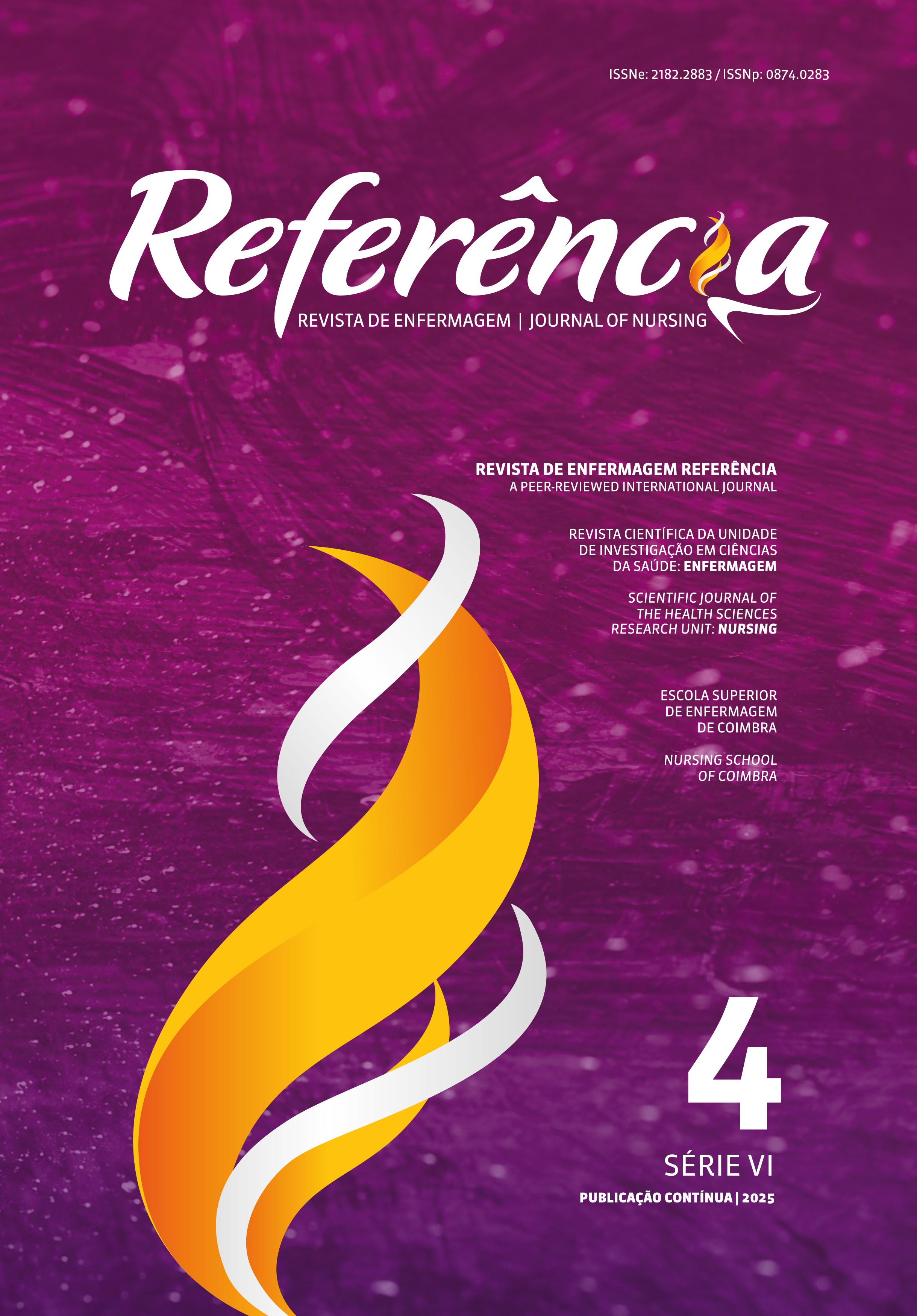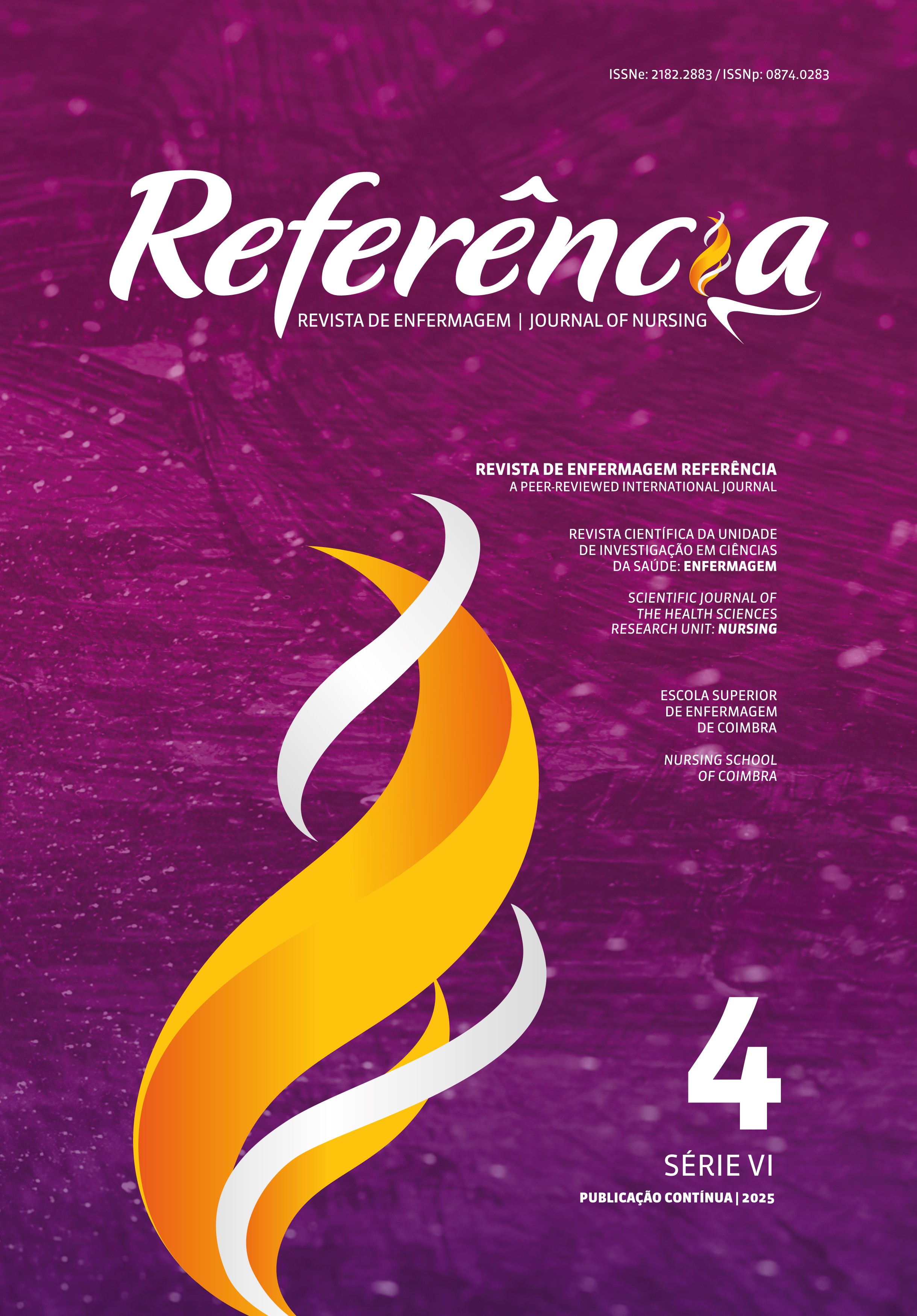Pre-Hospital Care for Trauma Victims Based on Kolcaba’s Theory of Comfort
DOI:
https://doi.org/10.12707/RVI24.85.37070Keywords:
nursing theory, models, nursing, nursing, prehospital care, patient comfort, traumaAbstract
Background: The physical, emotional, and psychological discomfort of pre-hospital trauma victims is often neglected by focusing only on the ABCDE approach and acute pain. A more comprehensive approach to discomfort is essential for humanizing the care of trauma victims in pre-hospital settings.
Objective: To critically analyze Kolcaba’s theory of comfort in the management of discomfort in the pre-hospital care of trauma victims.
Main topics under analysis: Kolcaba’s theory of comfort is valuable for pre-hospital care, covering physical, emotional, and spiritual comfort. Based on the types of comfort - relief, ease, and transcendence - the theory suggests holistic assessment, empathic communication, psychological support, spiritual respect, a comfortable environment, and continuity of care. This allows for comprehensive, person-centered care that promotes humanized recovery in pre-hospital emergencies.
Conclusion: Kolcaba’s theory of comfort guides healthcare professionals in improving the physical, emotional, and spiritual recovery of trauma victims by providing a humanized and comprehensive approach to pre-hospital emergencies.
Downloads
References
Apóstolo, J. L. (2009). O conforto nas teorias de enfermagem–análise do conceito e significados teóricos. Revista de Enfermagem Referência, 2(9), 61-67. https://rr.esenfc.pt/rr/index.php?module=rr&-target=publicationDetails&pesquisa=&id_artigo=2133&id_revista=4&id_edicao=26
Bergstrom, A., Hakansson, A., Stomberg, M. W., & Bjersa, K. (2018). Comfort theory in practice-nurse anesthetists’ comfort measures and interventions in a preoperative context. Journal of Perianesthesia Nursing, 33(2), 162-171. https://doi.org/10.1016/j.jopan.2016.07.004
Bice, A. A., & Bramlett, T. (2019). Teaching nurses from a holistic comfort perspective. Holistic Nursing Practice, 33(3), 141-145. https://doi.org/10.1097/HNP.0000000000000325
Castro, M., Fuly, P., Santos, M., & Chagas, M. C. (2021). Total pain and comfort theory: Implications in the care to patients in oncology palliative care. Revista Gaúcha de Enfermagem, 42, e20200311. https://doi.org/10.1590/1983-1447.2021.20200311
Chinn, P. L., Kramer, M. K., & Sitzman, K. (2022). Knowledge development in nursing: Theory and process (11th ed.). Elsevier.
Eadie, K., Carlyon, M. J., Stephens, J., & Wilson, M. D. (2013). Communicating in the pre-hospital emergency environment. Australian Health Review, 37(2), 140-146. https://doi.org/10.1071/AH12155
Ebrahimpour, F., & Hoseini, A. S. (2018). Suggesting a practical theory to oncology nurses: Case report of a child in discomfort. Journal of Palliative Care, 33(4), 194-196. https://doi.org/10.1177/0825859718763645
Gaibor, D. M., Auquilla, J. Y., Sinche, N. P., & Paredes, N. V. (2021). Stories of the elderly in relation to Katharine Kolcaba’s theory (Chillanes-Ecuador). Journal of Advanced Pharmacy Education & Research, 11(1), 48-52. https://doi.org/10.51847/rl1a4hm
Goldin, D., Maltseva, T., Scaccianoce, M., & Brenes, F. (2023). Holistic psychosocial approaches in the care of hispanic victims of trauma: An overview. Journal of Holistic Nursing, 41(1), 7-16. https://doi.org/10.1177/08980101221083162
Gonzalez-Baz, M. D., Pacheco del Cerro, E., Ferrer-Ferrándiz, E., Araque-Criado, I., Merchán-Arjona, R., Rubia Gonzalez, T., & Moro Tejedor, M. N. (2023). Psychometric validation of the Kolcaba general comfort questionnaire in critically ill patients. Australian Critical Care, 36(6), 1025-1034. https://doi.org/10.1016/j.aucc.2022.12.013
Kolcaba, K. (2001). Evolution of the mid range theory of comfortfor outcomes research. Nursing Outlook, 49(2), 86-92. https://doi.org/10.1067/mno.2001.110268
Kolcaba, K. (2003). Comfort theory and practice: A vision for holistic health care and research. Springer Publishing Company.
Kolcaba, K. Y. (1994). A theory of holistic comfort for nursing. Journal of Advanced Nursing, 19(6), 1178-1184. https://doi.ticaorg/10.1111/j.1365-2648.1994.tb01202.x
Lin, Y., Zhou, Y., & Chen, C. (2023). Interventions and practices using comfort theory of Kolcaba to promote adults’ comfort: An evidence and gap map protocol of international effectiveness studies. Systematic Reviews, 12(33), 1-10. https://doi.org/10.1186/s13643-023-02202-8
Miri, S., Hosseini, S. J., Vajargah, P. G., Firooz, M., Takasi, P., Mollaei, A., Ramezani, S., Tolouei, M., Zeydi, A. E., Osuji, J., Farzan, R., & Karkhah, S. (2023). Effects of massage therapy on pain and anxiety intensity in patients with burns: A systematic review and meta-analysis. International Wound Journal, 20(6), 2440-2458. https://doi.org/10.1111/iwj.14089
Mota, M., Cunha, M., Santos, E., Abrantes, T., Melo, F., Monteiro, M., & Santos, M. R. (2022). Prehospital interventions to reduce discomfort caused by immobilization in adult trauma victims: A scoping review protocol. JBI Evidence Synthesis, 20(11), 2743-2750. https://doi.org/10.11124/JBIES-22-00021
Mota, M., Cunha, M., Santos, M. R., Silva, D., & Santos, E. (2019). Non-pharmacological interventions for pain management in adult victims of trauma: A scoping review protocol. JBI Database of Systematic Reviews and Implementation Reports, 17(12), 2483-2490. https://doi.org/10.11124/JBISRIR-2017-004036
Mota, M., Melo, F., Castelo-Branco, M., Campos, R., Cunha, M., & Santos, M. R. (2024). Construction of the discomfort assessment scale for immobilized trauma victims (DASITV). International Emergency Nursing, 76(101501), 1-9. https://doi.org/10.1016/j.ienj.2024.101501
Mota, M., Melo, F., Henriques, C., Matos, A., Castelo-Branco, M., Monteiro, M., Cunha, M., & Santos, M. R. (2023). The relationship between acute pain and other types of suffering in pre-hospital trauma victims: An observational study. International Emergency Nursing, 71(101375), 2-6. https://doi.org/10.1016/j.ienj.2023.101375
Mota, M., Santos, M. R., Santos, E., Henriques, C., Matos, A., & Cunha, M. (2022). Tratamento pré-hospitalar da dor traumá aguda: Um estudo observacional. Acta Paulista de Enfermagem, 35, eAPE039001834. https://doi.org/10.37689/acta-ape/2022AO001834
Mota, M., Santos, M. R., Santos, E., Henriques, C., Matos, A., & Cunha, M. (2021). Trauma prehospital hypothermia prevention and treatment: An observational study. Journal of Trauma Nursing, 28(3), 194-202. https://doi.org/10.1097/JTN.0000000000000583
Müller, F., Schröder, D., & Noack, E. M. (2023). Overcoming language barriers in paramedic care with an app designed to improve communication with foreign-language patients: Nonrandomized controlled pilot study. JMIR Formative Research, 7, e43255. https://doi.org/10.2196/43255
Nascimento, B. A., Lima, D. M., & Passos, S. G. (2023). Humanização da assistência de enfermagem na unidade de terapia intensiva. Revista JRG de Estudos Acadêmicos, 6(13), 2024-2032. https://revistajrg.com/index.php/jrg/article/view/815
Oliveira, S. M., Costa, K. N., Santos, K. F., Oliveira, J. S., Pereira, M. A., & Fernandes, M. G. (2020). Comfort needs as perceived by hospitalized elders: An analysis under the light of Kolcaba’s theory. Revista Brasileira de Enfermagem, 73(suppl 3), e20190501. https://doi.org/10.1590/0034-7167-2019-0501
Péculo-Carrasco, J. -A., Sola, H., Casal-Sánchez, M. -M., Rodríguez-Bouza, M., Sánchez-Almagro, C. -P., & Failde, I. (2020). Feeling safe or unsafe in prehospital emergency care: A qualitative study of the experiences of patients, carers and healthcare professionals. Journal of Clinical Nursing, 29(23-24), 4720-4732. https://doi.org/10.1111/jocn.15513
Schoener, C. J., & Krysa, L. W. (1996). The comfort and discomfort of infertility. Journal of Obstetric Gynecologic & Neonatal Nursing, 25(2), 167-172. https://doi.org/10.1111/j.1552-6909.1996.tb02421.x
Yam, M. F., Loh, Y. C., Tan, C. S., Adam, S. K., Manan, N. A., & Basir, R. (2018). General pathways of pain sensation and the major neurotransmitters involved in pain regulation. International Journal of Molecular Sciences, 19(8), 2164. https://doi.org/10.3390/ijms19082164






















